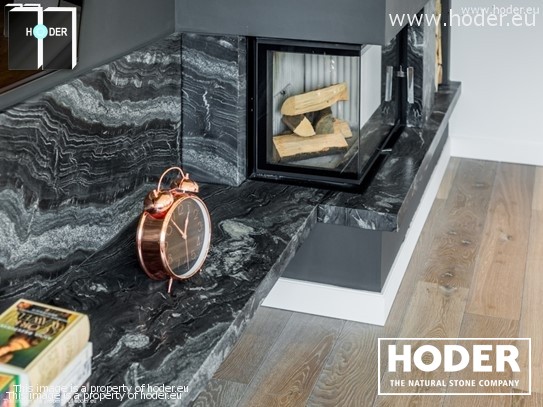MARBLE FIREPLACES – TREND OR TRADITION?

WE RESPECT YOUR PRIVACY
We use cookies to ensure the proper functioning of the website, and if you agree, also for marketing and advertising purposes. We use cookies in accordance with our Privacy Policy.
You can specify the conditions for storing or accessing cookies in your browser. The administrator of your data is Hoder Sp.k. More about more about storing cookies

A fireplace is not just an exceptional addition to interior décor but also serves as an auxiliary heat source. Hence, it's a staple in many homes. However, the process of selecting the ideal fireplace can be intricate, given the many factors involved. Considerations such as the size of the room, the type of fuel used, and the overarching design theme are essential. The choice of fireplace surround material is also crucial, with options ranging from stone and brick to plasterboard. Yet, marble stands out for various reasons. Why opt for marble, and what makes it so special?
WHY CHOOSE MARBLE?
Using natural stone invariably bestows a distinctive aura to interiors. Marble fireplaces ideally complement expansive, contemporary living spaces designed for entertaining. Beyond its sheer elegance, marble offers a vast color palette, enabling customizations to suit varied tastes. Its versatility ensures harmony with numerous interior design styles. As a good conductor of heat, marble is amenable to shaping, grinding, and polishing, making it a pragmatic choice for fireplace surrounds.
CHARACTERISTICS AND LONGEVITY OF MARBLE FIREPLACES
One notable advantage of marble is its commendable durability. While not as robust as granite, given its limestone composition, marble will undeniably meet the expectations of discerning fireplace enthusiasts. Every piece boasts a unique hue and texture, making it an excellent pick for those seeking a blend of aesthetics and longevity. Furthermore, marble is resilient and can withstand extreme temperatures, thus storing heat efficiently. To maintain its pristine condition, periodic impregnation using specialized products is recommended.
PROS AND CONS
Marble boasts an array of undeniable benefits, which is why many gravitate towards it when choosing fireplace materials. Traditionally viewed as emblematic of opulence and sophistication, its striking appearance is a major draw. Marble comes in shades of:
White,
Gray,
Brown,
Red,
Black.

Complementing materials like steel, wood, or glass, its commendable heat retention ensures prolonged warmth. Even though natural stones tend to be pricier, marble offers good value in terms of durability.
However, marble has its downsides. It's less sturdy compared to granite and is susceptible to discoloration. The stone can react with acidic compounds present in the environment, emphasizing the need for regular impregnation. Over time, marble may exhibit signs of wear, with minor scratches becoming noticeable. Yet, this worn look, especially when juxtaposed with apt lighting, appeals to many designers and architects.
The fireplace surround isn't just decorative; it shields the fireplace insert from excessive heat and facilitates the distribution of warmth to adjacent areas. Therefore, aesthetic appeal, though crucial, shouldn't be the sole determinant. Marble, with its blend of looks and functionality, is undeniably a sound investment.